This article was co-authored by Joel Giffin, PT, DPT, CHT. Dr. Joel Giffin is a Doctor of Physical Therapy and the Founder of Flex Physical Therapy in New York, New York. With over 15 years of experience as a Certified Hand Therapist (CHT), Dr. Giffin treats the whole body and specializes in rehabilitation of the hand and upper extremities. He has treated Broadway theater performers backstage at shows such as The Lion King, Sleep No More, Tarzan, and Sister Act. Flex Physical Therapy also specializes in occupational and pelvic floor therapy. Dr. Giffin earned his Master’s degree in Physical Therapy with honors from Quinnipiac University and received his Doctor of Physical Therapy (DPT) degree with distinction from Simmons College. He is a member of the American Physical Therapy Association and the American Society of Hand Therapists.
There are 10 references cited in this article, which can be found at the bottom of the page.
This article has been viewed 56,815 times.
The carpal tunnel is a rigid and narrow passageway for bones and ligaments that houses the median nerve and tendons. When the median nerve in the carpal tunnel is compressed and the tendons are irritated and swollen, carpal tunnel syndrome occurs. Symptoms of carpal tunnel syndrome include numbness or tingling in the hand and fingers, which may extend from the wrist up the arm as the condition progresses. Stretching exercises can ease irritation of the carpel tunnel by increasing blood flow, relaxing the muscles and tendons, and suppressing the symptoms to help you regain normal hand movement.[1]
Steps
Trying Some Wrist Stretches
-
1Do the prayer stretch. Stretches alone will not resolve an issue you have with carpal tunnel, but combined with effective treatments, they can help you to relieve moderate symptoms. The prayer stretch can help you to increase blood-flow to the median nerve. Try the prayer stretch for early relief of carpal tunnel pain, and to reduce sensations of numbness and tingling.[2]
- Begin with your palms pressed together in front of your chest, below your chin.
- Slowly lower your hands (still pressed together) downwards, keeping them close to the stomach.
- When you feel a moderate stretch, hold this position for 15 to 30 seconds.
- Repeat two to four times.
- The stretch should cause no pain. If you feel an increase in pain or numbness and tingling in your hands, then stop the exercise and see your doctor or physical therapist.
-
2Stretch the wrist flexor. Stretching your wrist flexor might help. Start by extending one arm forward, parallel to the floor with the palm facing the ceiling. With the other hand, bend the fingers down towards the floor.[3]
- When a stretch is felt, hold for 15 to 30 seconds.
- Switch arms and repeat two to four times.[4]
- If it is not possible for you to straighten your arm out, then you can also do this stretch with your elbow slightly bent.
- Alternatively, take your arm and reach it straight out to the side, then lift your hand up. Feel the stretch, then let your hand back down with the back still up and repeat 5-10 times, 3 times a day.[5]
Advertisement -
3Stretch the wrist extensor. Extend one arm forward, parallel to the floor with your palm facing the floor. With the other hand, bend your fingers down towards the floor.[6]
- When a stretch is felt, hold for 15 to 30 seconds.
- Switch arms and repeat two to four times.
- If it is not possible for you to straighten your arm out, then you can also do this stretch with your elbow slightly bent.
-
4Do wrist circles. Wrist circles can help you to decrease tension in the fingers and flexor tendons. Clench your fists then release the index and middle fingers, pointing them straight.
- With the two fingers draw five circles in a clockwise direction, then another five circles in a counterclockwise direction.
- Alternate hands, but repeat three times with each hand.
-
5Squeeze a ball in the palm of your hand. Squeeze a tennis ball or something similar to help you to increase mobility of the entire wrist. Using a pressure or stress ball can help alleviate carpal tunnel pain as well as provide stress relief.
- Gently squeeze the ball for five seconds and then release.
- Then switch to your other hand, and continue alternating.
- If you don’t have something to squeeze, make a fist and hold it for five seconds.
- Release, and then repeat five times.
- Switch to the other hand and repeat.
- If a tennis ball is too difficult to squeeze, then try squeezing a soft stress ball or even some clay.
-
6Do weighted wrist curls. You can help strengthen your wrists and potentially release tension by performing some weighted wrist curls. Take a light weight, a can of food is good to start with, and hold it in one hand. Hang your hand over the edge of a surface, such as a bench, table or your lap. Your palm should be facing down. Make sure that your forearm is supported.[7]
- Then slowly curl your wrist up, hold it for a moment and then slowly bring it back down.
- Repeat this for 10 repetitions.
- Then turn your arm over so your palm is facing the sky, and do ten more repetitions.
- You can also use a resistance band in a similar manner. Place your forearm on a surface, such as a bench, table, or your lap, but allow your hand to hang over the edge of the surface. Then, place the other end of the resistance band on the floor and secure it under your foot. Then, complete the curls. You can adjust the ‘tension’ on the elastic band by increasing or decreasing the length of the band.
Stretching With Your Fingers and Thumb
-
1Fan out your fingers. If you have been diagnosed with carpal tunnel, exercise alone are not likely to significantly relieve symptoms, and they don’t replace other treatments. You may find that stretches help to lessen pain and tension to some degree if your symptoms are not too severe.[8] You can extend and clench all your fingers to loosen ligaments in your wrist. Loosening your ligaments can help relieve tension within your carpal tunnel.
- With your arms relaxed at your sides, stretch out your fingers far apart.
- Hold this stretch for five seconds.
- Relax your hands and fingers, and then repeat the stretch.
- Repeat this exercise four times.[9]
-
2Extend and clench your fingers. Standing, extend both arms forward with palms facing downwards, parallel to the floor. Extend fingers upwards as if making a "stop" sign, and hold for five seconds.[10]
- Relax your fingers downwards so they are once again parallel to the floor.
- Squeeze your fingers into a tight fist and hold for five seconds.
- Unclench your fist.
- Then bend the wrists down towards the floor for another five seconds.
- Straighten both wrists and relax the fingers.
- Repeat this exercise 10 times, and then hang your arms loosely at your side and shake them out a little.[11]
-
3Do a thumbs-up stretch. Close all your fingers, keeping the thumb out and pointed up. Create some resistance with your hand and wrist to keep your thumb from moving. Then grab your thumb with your free hand, and gently pull it back.
- Hold it under tension for around five seconds.
- Release and repeat five to 10 times for each hand.
-
4Stretch your thumb under your hand. Another way to stretch your thumb starts with you holding your hand out flat in front of you. Fan out your fingers and ensure that your palm is facing the floor.
- Bend your thumb under your palm and try to touch the base of your smallest finger.
- Count to five, then release.
- Repeat for 10 times with each hand.
-
5Use rubber bands for a resistance exercise. Resist rubber bands to build strength in your flexor tendons. Place small rubber bands over all five fingers, then try to flex your fingers open to work the flexor tendons at your carpal tunnel.[12]
- You can double the band to reduce its size and add more resistance, to strengthen weakened hand muscles.
- You can also place the rubber band around the thumb and the index fingers only, or any two fingers you want to train.
- Expand them, then relax.
- Do each movement for one minute, or until you feel fatigued. Do not push yourself too hard. Instead, try to gradually build up your endurance. If you feel an increase in pain or numbness and tingling, stop the exercise and see your doctor or physical therapist.
Stretching Out Your Arms, Neck and Shoulders
-
1Pull one arm behind your back. You can ease tension in your neck and shoulder by stretching one arm (bent at a 90 degree angle) behind your back. Slightly twist your head in the opposite direction till you feel a stretch at your shoulder.
- If you are bending your right arm, turn your head to the left. You will feel a stretch over your right shoulder.
- Count to five then relax.
- Repeat three times then switch to the other arm.
- This may prevent the triggering of some of the carpal tunnel syndrome symptoms.
-
2Stretch your neck gently. You can gently stretch out and ease tension in your neck, if you have some tightness connected to carpal tunnel or repetitive strain injuries. Start by sitting upright, and then placing your right hand on to the top of your left shoulder. Hold your right shoulder down and slowly dip your head forward, and slightly to the right.[13]
- Hold the stretch for five seconds, and only apply a light amount of pressure.
- Release slowly, and then repeat this stretch on the other side.
-
3Do a shoulder shrug stretch. Start by standing up, with your arms relaxed by your side. Then raise your shoulder in a shrugging motion. Squeeze your shoulders back, and then stretch and pull them down. Hold it for a moment and then push your shoulders forward.[14]
- This should give you a good and comprehensive stretch for your shoulders.
- The whole movement should take you around seven seconds to run through.
-
4Stretch your hands and elbows against a wall. You can perform this stretch to help you to strengthen your arm muscles between the wrist and inner elbow.[15] This can help create mobility and support through your wrist.
- Facing a wall, raise your arm until it is parallel to the floor and then place your palm against the wall with your fingers pointing up.
- If you can't feel the stretch, lean gently into the wall.
- Then count to 30 and release.
- Repeat this three times with each arm.
- For a deeper stretch, turn your palm so your fingers point to the ground.
Expert Q&A
-
QuestionHow can I stretch out my carpal tunnel?
 Joel Giffin, PT, DPT, CHTDr. Joel Giffin is a Doctor of Physical Therapy and the Founder of Flex Physical Therapy in New York, New York. With over 15 years of experience as a Certified Hand Therapist (CHT), Dr. Giffin treats the whole body and specializes in rehabilitation of the hand and upper extremities. He has treated Broadway theater performers backstage at shows such as The Lion King, Sleep No More, Tarzan, and Sister Act. Flex Physical Therapy also specializes in occupational and pelvic floor therapy. Dr. Giffin earned his Master’s degree in Physical Therapy with honors from Quinnipiac University and received his Doctor of Physical Therapy (DPT) degree with distinction from Simmons College. He is a member of the American Physical Therapy Association and the American Society of Hand Therapists.
Joel Giffin, PT, DPT, CHTDr. Joel Giffin is a Doctor of Physical Therapy and the Founder of Flex Physical Therapy in New York, New York. With over 15 years of experience as a Certified Hand Therapist (CHT), Dr. Giffin treats the whole body and specializes in rehabilitation of the hand and upper extremities. He has treated Broadway theater performers backstage at shows such as The Lion King, Sleep No More, Tarzan, and Sister Act. Flex Physical Therapy also specializes in occupational and pelvic floor therapy. Dr. Giffin earned his Master’s degree in Physical Therapy with honors from Quinnipiac University and received his Doctor of Physical Therapy (DPT) degree with distinction from Simmons College. He is a member of the American Physical Therapy Association and the American Society of Hand Therapists.
Physical Therapist One simple exercise is to put one hand palm up in front of you, then take your other hand and pull your wrist down so your arm stays straight but your wrist is being pulled down towards the floor. You should feel a stretch in your forearm. Don't just push on your fingertips, but push on the palm of the hand that's being stretched.
One simple exercise is to put one hand palm up in front of you, then take your other hand and pull your wrist down so your arm stays straight but your wrist is being pulled down towards the floor. You should feel a stretch in your forearm. Don't just push on your fingertips, but push on the palm of the hand that's being stretched.
Warnings
- The goal of the exercises is to build up to a comfortable set of time. If at any time you feel fatigued or pain, then stop.⧼thumbs_response⧽
- If you are suffering from pain and discomfort, you should make an appointment with your doctor.⧼thumbs_response⧽
References
- ↑ Joel Giffin, PT, DPT, CHT. Physical Therapist. Expert Interview. 9 September 2020.
- ↑ https://myhealth.alberta.ca/Health/aftercareinformation/pages/conditions.aspx?hwid=ad1506
- ↑ Joel Giffin, PT, DPT, CHT. Physical Therapist. Expert Interview. 9 September 2020.
- ↑ https://myhealth.alberta.ca/Health/aftercareinformation/pages/conditions.aspx?hwid=ad1506
- ↑ Joel Giffin, PT, DPT, CHT. Physical Therapist. Expert Interview. 9 September 2020.
- ↑ https://orthoinfo.aaos.org/globalassets/pdfs/a00789_therapeutic-exercise-program-for-carpal-tunnel_final.pdf
- ↑ https://wexnermedical.osu.edu/blog/how-to-strengthen-your-grip
- ↑ https://myhealth.alberta.ca/Health/aftercareinformation/pages/conditions.aspx?hwid=ad1506
- ↑ http://blog.harvardvanguard.org/2014/08/carpal-tunnel-syndrome/
- ↑ https://orthoinfo.aaos.org/globalassets/pdfs/a00789_therapeutic-exercise-program-for-carpal-tunnel_final.pdf
- ↑ http://www.eatonhand.com/hw/ctexercise.htm
- ↑ https://www.drugs.com/cg/carpal-tunnel-syndrome-exercises.html
- ↑ https://ors.od.nih.gov/sr/dohs/HealthAndWellness/Ergonomics/Pages/exercises.aspx
- ↑ https://www.saintlukeskc.org/health-library/shoulder-shrug-exercise
- ↑ https://www.sciencedirect.com/science/article/pii/S0894113020300016
About This Article
To do hand stretches to help with your carpal tunnel syndrome, try squeezing a tennis ball or stress ball in the palm of your hand for 5 seconds at a time, which can help improve your wrist mobility and alleviate pain. If you don’t have a ball, you can still do the stretch by making a fist with your hand instead. Alternatively, try pressing your palms together in front of your chest and slowly lowering them down to your stomach. Once you feel a stretch, hold the position for 15 to 30 seconds and then release. You can also stretch your hand by relaxing your arms at your sides and spreading out your fingers. Hold your fingers like the that for 5 seconds, then release. For more suggestions from our Chiropractor co-author, like how to use rubber bands to stretch your hands, keep reading!

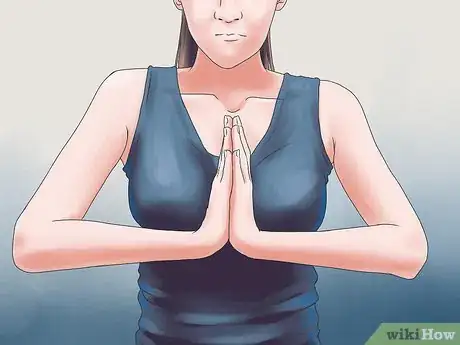
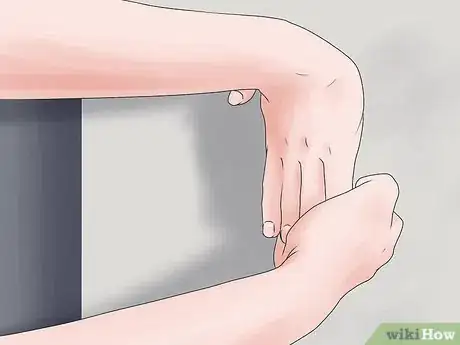
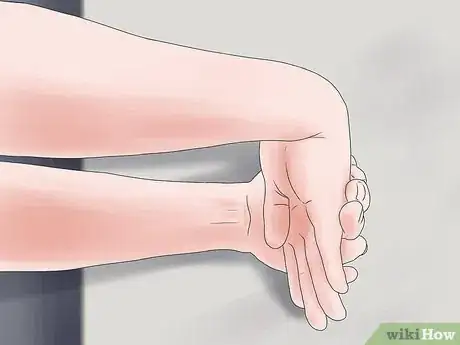
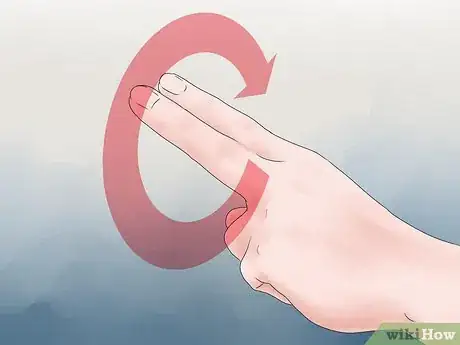
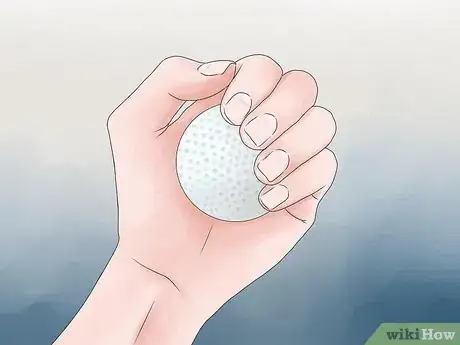
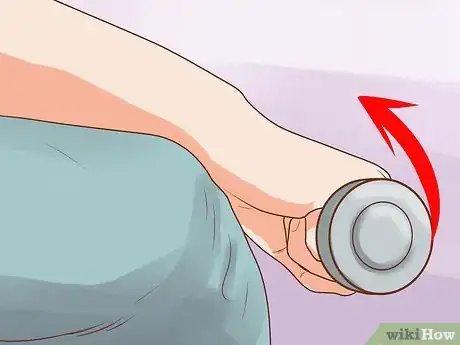
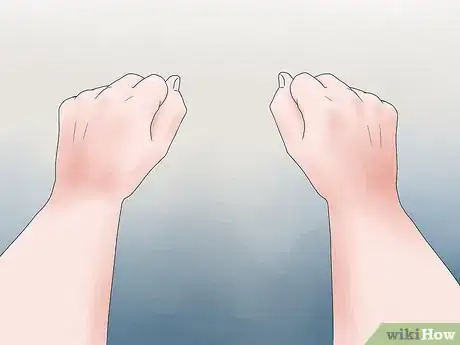
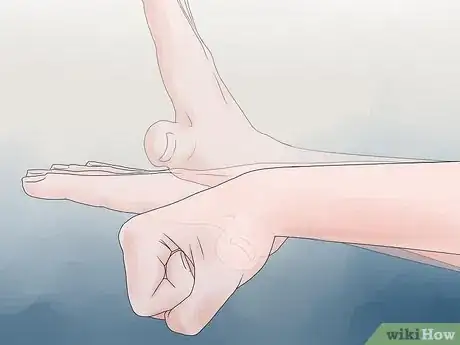
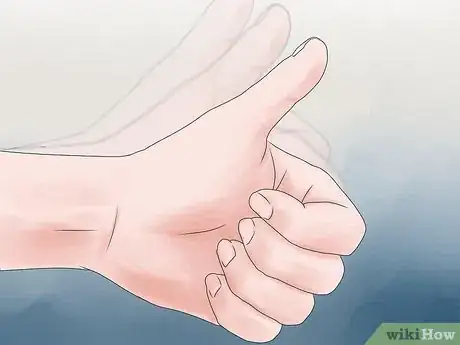
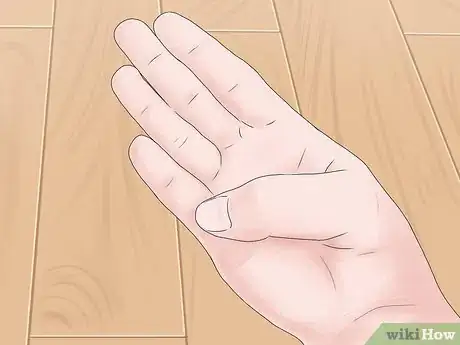
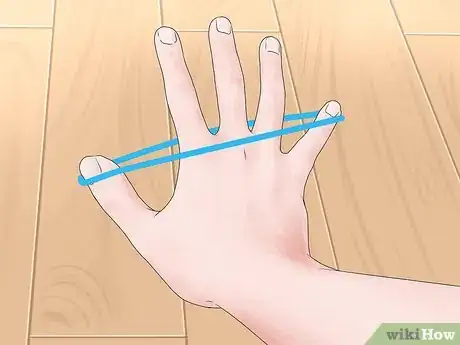
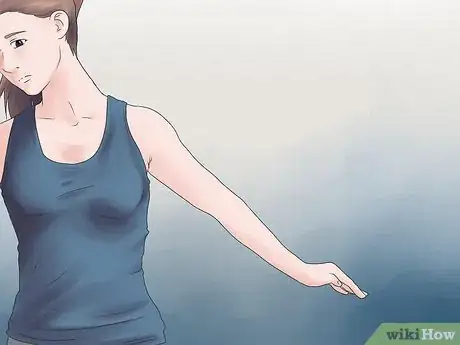
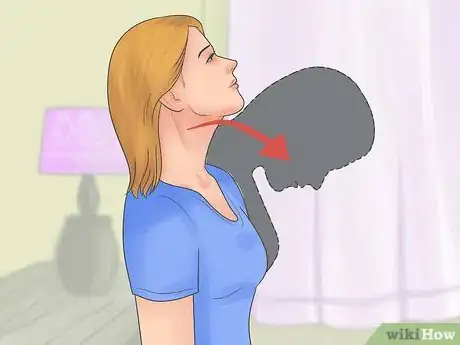

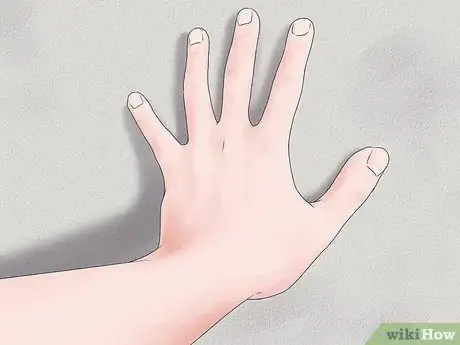
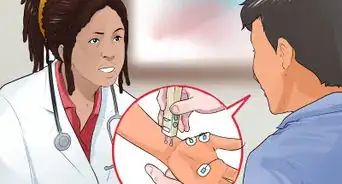

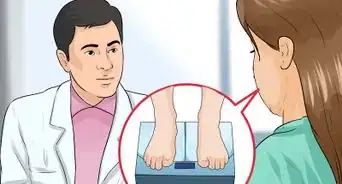
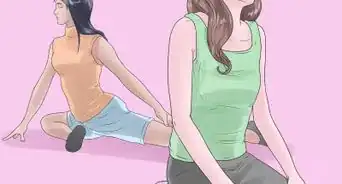
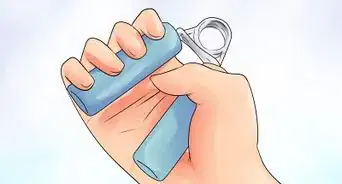
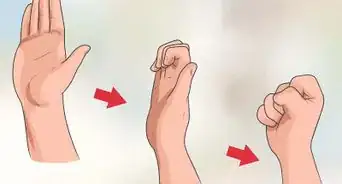
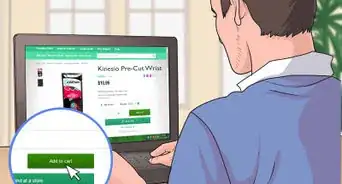


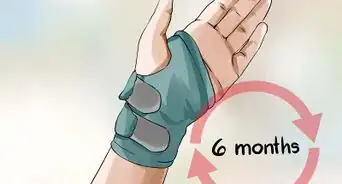












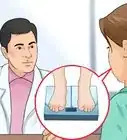




































Medical Disclaimer
The content of this article is not intended to be a substitute for professional medical advice, examination, diagnosis, or treatment. You should always contact your doctor or other qualified healthcare professional before starting, changing, or stopping any kind of health treatment.
Read More...